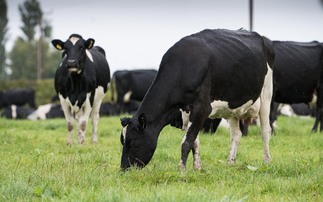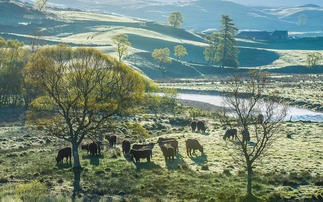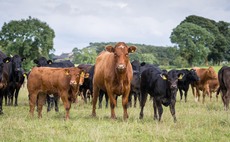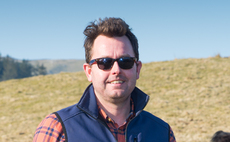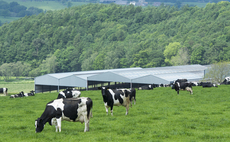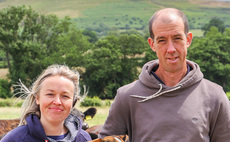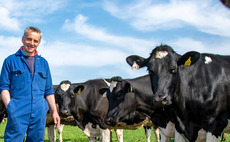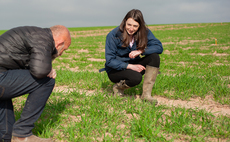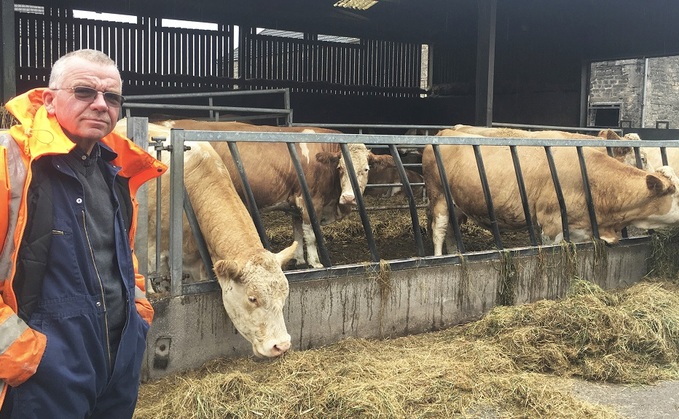
AHDB's Farm Business Review is helping one Nottinghamshire beef farmer improve farm efficiencies in a bid to drive farm business performance, as he gears up for the transition to environmental payments. Mollie Leach reports.
For beef farmer Ian Willison, of Williamwood Farm, Shirebrook, Nottingham, a passion for working with cattle motivated him to take a closer look at the business performance of his farming operation with the help of AHDB's Farm Business Review.
Farming across 81 hectares (200 acres) and with a closed herd of 100 autumn calved suckler Simmental cross Hereford cows, Mr Willison said cuts to direct payments had prompted him to future-proof his business.
He said: "My priority has always been centred around looking at practical ways in which we can recoup and mitigate the losses presented by the reduction in Basic Payment Scheme [BPS] payments.
"Our BPS entitlement currently sits at £18,000, which will decrease to £9,000 by 2024. AHDB's Farm Business Review has provided us with the tools to help future-proof our business and assess how it will cope with such losses."
Business model
Taking a deep dive into Mr Willison's business model with AHDB knowledge exchange manager Sarah Hurford, the tool provided an opportunity to discuss the improvement of on-farm efficiencies over the next five years to bridge the gap in BPS payments.
The pair quickly identified savings in fertiliser cost could be made by integrating certain legumes, such as vetches, sainfoin or lucernes, into Mr Willison's rotation.
"As fertiliser prices continue to increase, looking at ways to shave input costs will be crucial going forward. This need was identified in collaboration with Ms Hurford.
"A business case has been put forward for us to access further in-depth support via an agri-business appraisal, all as part of AHDB's Farm Business Review."
And having successfully applied for the Sustainable Farming Incentive pilot, Defra's new scheme could also help the business recoup more than £7,000 in BPS losses.
But with few farms surviving on farm income alone, Mr Willison said the oneto-one consultation with Ms Hurford had brought sharply into focus the importance of diversification enterprises as a means of remaining profitable in a post-BPS world.
He said: "We have a 31-horse livery yard, a profitable diversification enterprise, the monies from which we reinvest back into the farm, as we run the two enterprises side by side.
"Our discussion with Ms Hurford highlighted the importance of breaking down the spending costs to ask whether the reinvestment of these funds was and will continue to be sustainable."
And with agriculture now at a ‘crossroads', Mr Willison added diversification would play a huge role in plugging the gap in financial losses.
The service also highlighted potential opportunities to expand the existing business by renting additional land to feed the enterprise's current herd size.
He said: "Again, with the price of fertilisers increasing, expanding the business in this way could result in a reduced need to buy-in feed or forage off farm.
"We will need to look at the feasibility of this in more detail, but the need to review our fixed costs and stocking rates are areas which have been flagged as a priority for the business going forward."
Looking at the next steps for preparing Mr Willison's beef enterprise for the agricultural transition, AHDB's KPI express calculator helped to unpack the cash position of the business.
He said: "Running through the flow of funds from profit to cash in the average year, the farm generates a good amount of cash, which would be available for reinvestment into the farm or to be taken as a cash sum at the end of the tenancy.
"Crucially, without BPS the farm still generates cash, even on minimal profit levels, which means our farm will not deplete its net worth or asset value if trading continues at current levels without subsidy."
And once the pair had worked out a suitable monetary figure to have available towards retirement, Mr Willison said the business was in a position to make a profit requirement calculation.
Ms Hurford said: "This will allow Mr Willison to see how many years it will take him to generate the cash and how much you can draw from the business without depleting the asset value."
Despite Mr Willison's wealth of experience within the industry, the shift to environmental payments has meant the learning process is ongoing, as farmers are faced with a raft of new subsidy options.
Thought-provoking
He said: "This has been a thought-provoking process, which has made me aware of my options in the wake of a transition where multiple agri-environment schemes are circulating.
"Being able to access tailored indepth advice from an AHDB consultant has helped to demystify the options.
While some farmers have adopted a wait-and-see approach, others have been overwhelmed by the number of options available.
"This initiative is a great starting point for future planning as we move towards a new era of farming."

Williamwood farm key business facts
- 81 hectares (200 acres) ring-fenced tenancy, 32ha (80 acres) of which is Agricultural Holdings Act, the remainder on Farm Business Tenancy from the same landlord, with whom there is a very good relationship.
- Most soils are medium loams over lime.
- Closed herd of 100 autumn calved suckler cows plus followers; average 250 head.
Simmental cross Hereford animals, intensively finished; previously, Simmental cross British Blue or Simmental cross Limousin were used. - Change is due to the desire for polled stock; calves are weaned in June when grass supply starts to get shorter (then bulls are housed separate to females).
- Males sold entire, surplus females sold as breeding stock.
- The beef system has been closely analysed to ensure the best use of time and available resources, resulting in changes in the farm system over recent years, such as a move away from outwintering on stubble turnips, tightening beef finishing times by using intensive methods with a forage base and a move away from growing cereals.
- Rotational grazing beef animals, with three days on and three weeks off a paddock.
- 10ha (25 acres) forage maize used in house, the rest grass, some of which is on ex-British coal fields and therefore is not high yielding; there may be an opportunity for some further ex-British coal land.
- The farm is stocked at 2.4 livestock units/ha (one livestock unit/acre) and buys-in cereals, straw, forage and protein.
- Entered pilot scheme for Sustainable Farming Incentive grassland soils standard.
- Diversifications include a 31-horse livery yard, with a small amount of caravan storage (decreasing each year).
AHDB Hub

For more projects from AHDB, visit the homepage.













